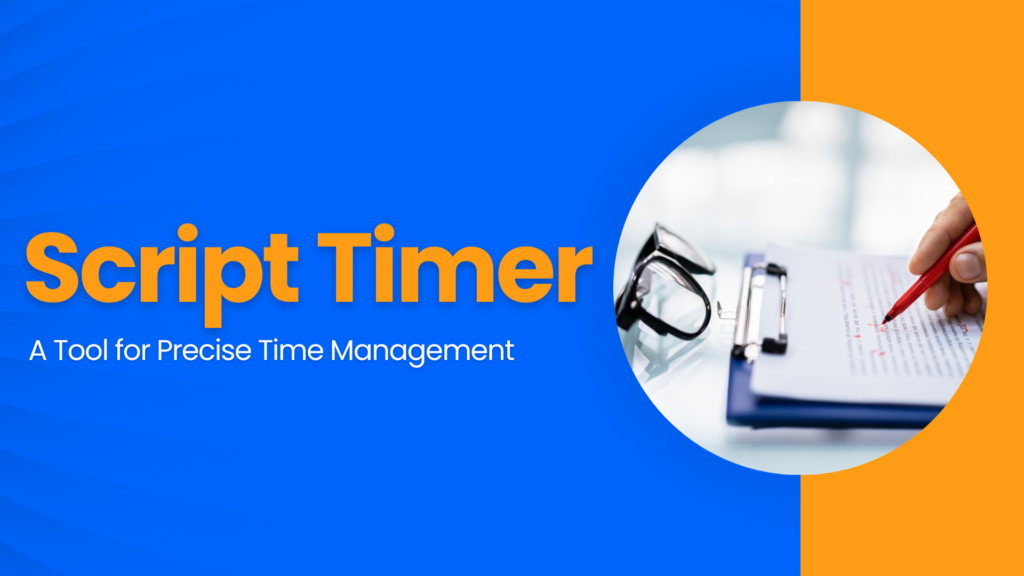We’ve all been there. You’re scrolling through your favorite blog or news site, and you see an intriguing article. You glance at the clock, wondering, “Do I have time to dive into this gem?” Wouldn’t it be fantastic if there was a nifty tool that estimated reading time for you? Well, behold the magic of the script timer!
1. The Genesis: Why Does Reading Time Matter?
Once upon a time in the bustling land of content creation, writers and marketers alike realized something critical: the value of respecting their audience’s time. In today’s age of information overload, readers appreciate a heads-up on how long an article might take to peruse. Here, the script timer came to the rescue, transforming the way we consume content.
Take, for example, a seasoned business executive who wants to refine her public speaking skills. She hops onto a platform like script-timer.com and stumbles across an article titled “Mastering Public Speaking“. The script timer feature on the site estimates it’ll take her 7 minutes to read. That’s a small investment for a valuable skill upgrade, right?
2. The Science Behind the Estimation: Words per Minute (WPM)
So, how does a script timer estimate reading time? The secret lies in the age-old metric: Words Per Minute (WPM). The average person reads between 200-250 WPM. By calculating the word count of an article and dividing it by the WPM, you get a ballpark reading time.
For instance, if an article is 1000 words long:

Of course, other factors play a role – complexity of language, inclusion of images, or interactive elements. But WPM provides a solid starting point.
The issue is: people do not read at the same speed as they speak.
The rule of thumb for conversational English is 180 WPM.
The rule of thumb for narration and voiceovers is 150 WPM.
The rule of thumb for videos fully depends on the amount of visuals, music, action sequences, and more. The range can be 20 to 225 (For a Terrance Malik movie vs. an episode of The Gilmore Girls)
This is why it’s important to know the type of project you are working on.
3. Script Timer in Action: More Than Just Blogs
When you hear “script timer,” you might initially think of blog posts or articles. But its utility spans much broader horizons. From scripts for YouTube videos to sales pitches, estimating reading or presentation time becomes a valuable tool for both the creator and the audience.
Imagine preparing for a presentation using resources from Improve Your Script in 6 Easy Steps. With the script timer function, you can gauge how long each section will take, ensuring you remain within your allotted timeframe.
4. Why Every Site Needs a Script Timer
Relate this concept to a broader business context. In sales, for example, storytelling is a potent tool. As explained in this insightful course, narratives can speed up the sales cycle. How? By gripping the attention of potential customers.
Similarly, a script timer holds attention by managing time expectations. When readers or viewers know the duration commitment up front, they’re more likely to engage and stay till the end. It’s about setting clear expectations and respecting the consumer’s time – a principle that every business, irrespective of the industry, should cherish.
5. Script Timer Extensions & Tools
In the ever-evolving world of tech, script timers aren’t confined to websites. Various browser extensions and tools are available, catering to diverse needs. For those particularly invested, platforms like script-timer.com offer more tools to refine and tailor the reading or presentation experience to perfection.
In summary, estimating reading time from word count with a script timer is a game-changer in content consumption. It’s a blend of science, technology, and respect for the audience’s time. So, the next time you stumble upon an article or prepare a presentation, remember the magic number provided by the script timer. It’s there to ensure that every minute you invest in reading or presenting is a minute well spent.
Three Things you can do to keep fast track of your learning:
- Connect on Linkedin as I share valuable lessons weekly.
- Fast track your learning: Get the 6 Steps plus 15 years of Hollywood and Agency experience in one Workshop and masterclass.
- Use the template: 18 Scripts that Sell (also included in every Script-Timer plan.)





